
Current Optics and Photonics
Scope & Guideline
Empowering Researchers in Optics and Photonics
Introduction
Aims and Scopes
- Innovative Imaging Techniques:
The journal frequently publishes research on advanced imaging methods, including digital holography, optical coherence tomography, and various forms of microscopy, focusing on enhancing resolution and accuracy. - Optical Materials and Devices:
Research on novel materials, such as metamaterials, photonic crystals, and nanostructures, is a core theme, with studies exploring their properties and applications in optical devices. - Signal Processing in Optical Communications:
There is a significant focus on the development of algorithms and techniques for processing optical signals, including methods for noise reduction, modulation schemes, and communication system designs. - Biomedical Applications of Optics:
The journal features research on the application of optical technologies in biomedical fields, including imaging, sensing, and therapy, highlighting the intersection of optics and healthcare. - Machine Learning and Computational Optics:
An increasing number of papers apply machine learning techniques to solve complex problems in optics, such as image reconstruction and optical system optimization, showcasing the integration of AI in photonics.
Trending and Emerging
- Deep Learning and AI in Optics:
A significant trend is the application of deep learning and artificial intelligence techniques in optics, particularly for image processing, reconstruction, and system optimization, indicating a shift towards data-driven methodologies. - Integration of Photonics with Quantum Technologies:
There is a growing interest in the intersection of photonics and quantum technologies, including quantum communication and quantum imaging, reflecting advancements in both fields and their combined applications. - Sustainable and Green Photonics:
Research focusing on environmentally friendly optical technologies, such as energy-efficient photonic devices and sustainable materials, is gaining traction, aligning with global sustainability goals. - Advanced Sensing Technologies:
Emerging themes include the development of sophisticated optical sensors for various applications, particularly in biomedical and environmental monitoring, emphasizing the importance of real-time data acquisition. - Metasurfaces and Nanophotonics:
The exploration of metasurfaces and nanophotonic devices is on the rise, with research focusing on their unique optical properties and potential applications in imaging, communication, and sensing.
Declining or Waning
- Traditional Laser Technology:
Research focused solely on conventional laser technologies, such as basic laser design and operation, has decreased as the field shifts towards more innovative applications and hybrid systems. - Basic Optical Theory:
Papers that primarily discuss foundational optical theories without significant experimental or applied context have become less common, as the journal emphasizes applied research that demonstrates practical implications. - Static Optical Systems:
There has been a noticeable decline in publications on static or non-adaptive optical systems, as the community increasingly values dynamic and adaptive systems that can respond to varying conditions.
Similar Journals
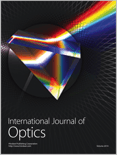
International Journal of Optics
Advancing Knowledge Through LightWelcome to the International Journal of Optics, a distinguished publication dedicated to advancing the field of optics and its interdisciplinary applications. Published by HINDAWI LTD, this open-access journal has been pivotal in fostering knowledge since its inception in 2009. With a robust focus on atomic and molecular physics as well as electronic, optical, and magnetic materials, the journal has carved its niche within Q3 quartile rankings in these categories for 2023, signifying its growing impact and relevance in the scientific community. Researchers and professionals will find a rich repository of innovative and cutting-edge research articles that not only address fundamental aspects of optics but also explore practical applications across various domains. The journal's aim is to promote high-quality research dissemination, enhancing collaboration among scientists and ensuring that pivotal findings reach a global audience. Join us in exploring the dynamic world of optics—where your contributions help shape the future of science.
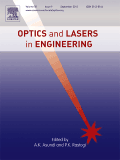
OPTICS AND LASERS IN ENGINEERING
Illuminating Innovations in Laser TechnologyOPTICS AND LASERS IN ENGINEERING, published by Elsevier Science Ltd, is a premier journal dedicated to advancing the field of optics and laser technology in engineering applications. With a robust ISSN of 0143-8166 and E-ISSN 1873-0302, this journal is positioned within the top quartile (Q1) across several categories, including Atomic and Molecular Physics, Electrical Engineering, and Mechanical Engineering as of 2023, showcasing its prestige and impact in the scientific community. The journal has consistently ranked high in Scopus, notably within the top 10% for Mechanical Engineering and Electronic, Optical, and Magnetic Materials research. Since its inception in 1980, OPTICS AND LASERS IN ENGINEERING has served as a vital platform for disseminating cutting-edge research, fostering innovation and collaboration among researchers, professionals, and academia. Though it does not currently offer Open Access options, its high impact factor and selective publication process ensure that articles reach a wide audience while maintaining rigorous academic standards. Researchers and students alike are encouraged to engage with this influential journal to contribute to and stay abreast of advancements in optical technologies and their engineering applications.
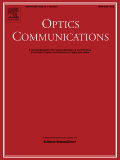
OPTICS COMMUNICATIONS
Exploring the Frontiers of Optical CommunicationOptics Communications, published by Elsevier, is a prestigious international journal that focuses on the dynamically evolving fields of optics and photonics. With its ISSN 0030-4018 and E-ISSN 1873-0310, this journal has made significant contributions to the fields of Atomic and Molecular Physics, Electrical and Electronic Engineering, Electronic, Optical and Magnetic Materials, and Physical and Theoretical Chemistry, consistently ranking in the Q2 quartile across these categories for 2023. The journal, based in the Netherlands, is recognized for its rigorous peer-review process and aims to publish high-quality research articles that advance knowledge and applications in optical communication technologies. Although it operates under a subscription model, the insightful research published here plays an essential role in informing the work of researchers, professionals, and students alike. With a history dating back to 1969 and spanning well into 2025, Optics Communications remains a crucial resource for cutting-edge developments in optics, catering to a global audience dedicated to innovation in this pivotal science.
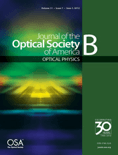
JOURNAL OF THE OPTICAL SOCIETY OF AMERICA B-OPTICAL PHYSICS
Unveiling the Wonders of Optical TechnologiesJOURNAL OF THE OPTICAL SOCIETY OF AMERICA B-OPTICAL PHYSICS, published by Optica Publishing Group, serves as a leading platform for groundbreaking research in the fields of optical physics, atomic and molecular physics, and statistical and nonlinear physics. With an ISSN of 0740-3224 and an E-ISSN of 1520-8540, this esteemed journal has been in circulation since 1984 and is dedicated to advancing the understanding of optical phenomena and related technologies. It holds a commendable position in the academic community, with a 2023 Scopus ranking reflecting its significance—placing it in the top quartile for both Atomic and Molecular Physics and Statistical and Nonlinear Physics. Although it is not an open-access publication, it provides extensive access options to ensure that research is disseminated effectively within the scientific community. This journal is instrumental for researchers, professionals, and students alike, aiming to keep them informed of the latest advancements and trends in optical science. With a convergence of expertise and innovation, JOSA B continues to play a pivotal role in shaping the future of optical research.
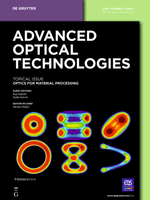
Advanced Optical Technologies
Pioneering Innovations in Light and MaterialsAdvanced Optical Technologies is a reputable journal dedicated to advancing the field of optics and photonics, published by FRONTIERS MEDIA SA in Switzerland. Since its inception in 2012, the journal has made significant contributions to the domains of Atomic and Molecular Physics, Electronic, Optical and Magnetic Materials, and Instrumentation, achieving commendable rankings within these categories, including a Q2 quartile classification in 2023. With an emphasis on open access, Advanced Optical Technologies aims to facilitate the rapid dissemination of research findings, thereby fostering collaboration and innovation among researchers, professionals, and students alike. The journal serves as an essential platform for cutting-edge research articles, reviews, and technical notes, and its commitment to quality is reflected in its robust Scopus rankings. As the field of optical technologies continues to expand, this journal plays a crucial role in highlighting pivotal advancements and promoting interdisciplinary dialogue among scholars in the scientific community.

Journal of Optics
Connecting Innovators in Optical MaterialsThe Journal of Optics, published by IOP Publishing Ltd, stands as a pivotal platform for disseminating cutting-edge research in the fields of atomic, molecular physics, and optics as well as electronic, optical, and magnetic materials. With an impact factor reflective of its esteemed position—ranking in the 60th percentile in both relevant Scopus categories—this journal, boasting an ISSN of 2040-8978 and an E-ISSN of 2040-8986, is uniquely positioned to foster innovation and collaboration among researchers, professionals, and students worldwide. Located in the United Kingdom and operational since 2010, the journal embraces an open access model, promoting maximal reach and engagement with the latest discoveries that shape the future of optics. As it continues to evolve through its converged years up to 2024, the Journal of Optics remains a critical resource for those seeking to advance their knowledge and influence in this dynamic field.

JOURNAL OF THE OPTICAL SOCIETY OF AMERICA A-OPTICS IMAGE SCIENCE AND VISION
Unveiling the Secrets of Light and PerceptionJOURNAL OF THE OPTICAL SOCIETY OF AMERICA A-OPTICS IMAGE SCIENCE AND VISION, published by Optica Publishing Group, is a leading journal in the fields of optics, image science, and vision. With a rich history dating back to 1979, it serves as an essential platform for disseminating cutting-edge research and developments from 1984 to 2024. The journal covers a wide array of topics, including atomic and molecular physics, electronic and optical materials, and pattern recognition in computer vision. Its prestigious categorization in the Q2 quartile for Atomic and Molecular Physics and Optics and its Q3 rankings in Computer Vision and Medical fields indicate the high-level contributions it fosters within the scientific community. Researchers will benefit from its commitment to rigorous peer review and its role in advancing knowledge at the intersection of science and application. Although it is not an open-access journal, the quality of content attainable here is invaluable for academics, industry professionals, and students eager to explore the forefront of optical science.

Advanced Photonics
Transforming Research into Real-World SolutionsAdvanced Photonics, published by SPIE-SOC PHOTO-OPTICAL INSTRUMENTATION ENGINEERS, is a prestigious open-access journal dedicated to cutting-edge research in the fields of photonics, optics, biomedical engineering, and material science. Since its inception in 2019, this journal has successfully established itself in the top quartile (Q1) of various categories, including Atomic and Molecular Physics, Biomedical Engineering, and Electronic, Optical and Magnetic Materials, showcasing its critical role in advancing knowledge and innovation within these disciplines. With impressive Scopus rankings—#8 in Biomedical Engineering, #7 in Atomic and Molecular Physics, and #10 in Materials Science—Advanced Photonics serves as an essential platform for researchers, professionals, and students alike, offering a wealth of accessible scholarly content to keep pace with rapid technological developments. The journal not only fosters collaboration and knowledge dissemination within the global scientific community but also emphasizes the importance of open access to ensure that groundbreaking research benefits society as a whole.
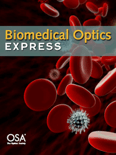
Biomedical Optics Express
Pioneering Innovations in Optical ScienceBiomedical Optics Express, published by the prestigious Optica Publishing Group, is an open-access journal that has been at the forefront of the field of biomedical optics since its inception in 2011. With an ISSN of 2156-7085, this journal has established itself as a premier platform for disseminating high-quality research that spans an array of topics in atomic and molecular physics, optics, and biotechnology. As a testament to its scholarly impact, it is currently ranked in the Q1 category for both Atomic and Molecular Physics and Biotechnology, reflecting its commitment to excellence within these disciplines. The journal features cutting-edge articles that foster innovation and collaboration among researchers, professionals, and students who are passionate about applying optical technologies to solve pressing challenges in medicine and biology. Based in the United States, Biomedical Optics Express continues to shape the future of optical science and its applications, inviting contributions that inspire and drive forward the boundaries of knowledge.

eLight
Illuminating the Future of Atomic and Molecular PhysicseLight is a leading academic journal published by SPRINGER NATURE, dedicated to the dynamic field of Atomic and Molecular Physics, as well as Electronic, Optical, and Magnetic Materials. Launched in 2021, the journal has quickly established itself as a reputable source of cutting-edge research, evidenced by its impressive Q1 quartile rankings in both categories for 2023, alongside remarkable Scopus rankings that place it in the top 2% of its fields. With a commitment to advancing knowledge and fostering innovation, eLight invites contributions from researchers, professionals, and students who are passionate about exploring new frontiers in these critical areas of study. Hitting a critical intersection of physics and materials science, the journal provides an open forum for the dissemination of experimental findings, theoretical studies, and application-based research, ensuring accessibility to vital discoveries that drive progress in technology and academia. Located in Singapore, eLight is poised to make significant contributions to the scientific community until at least 2024, and beyond.